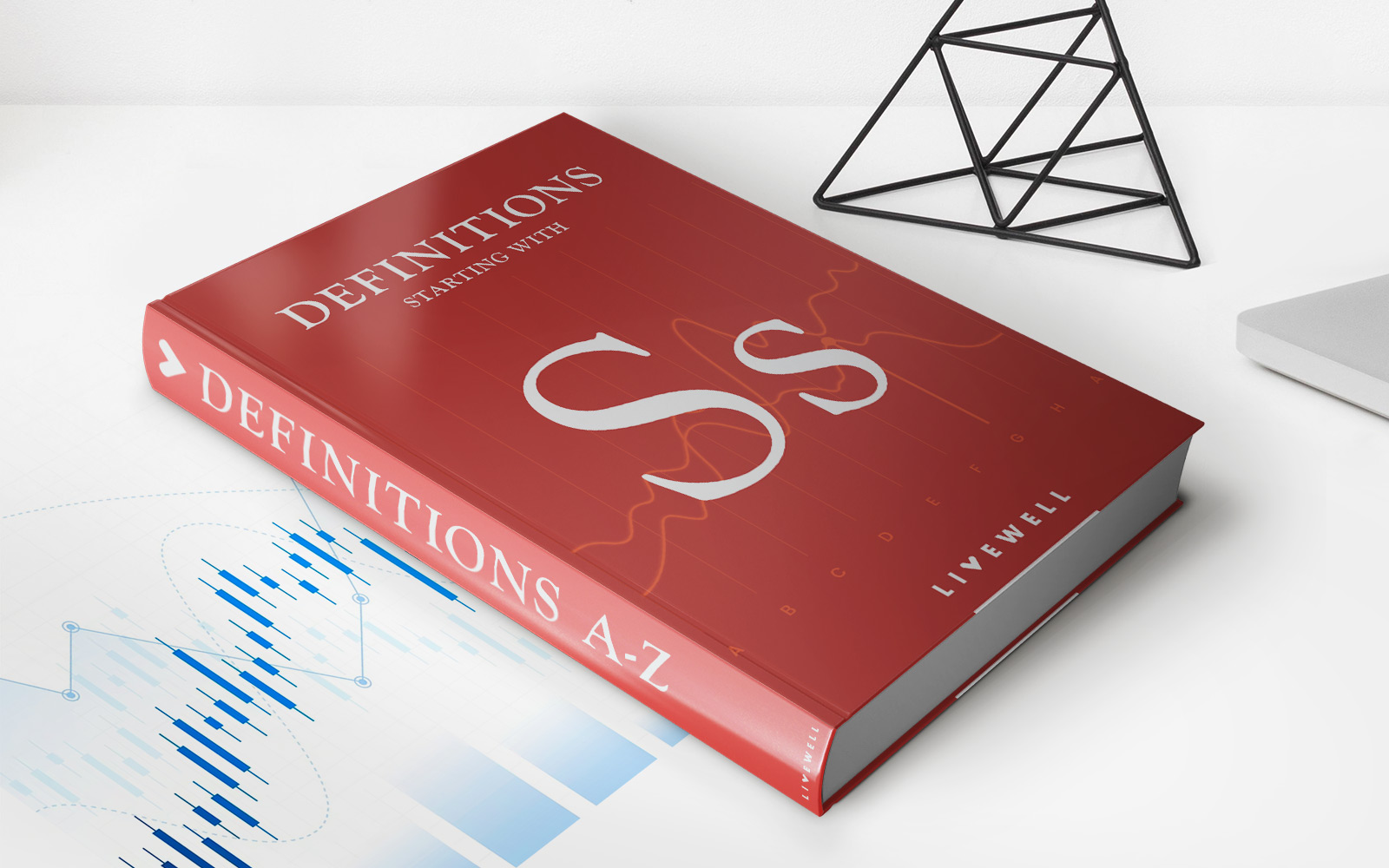

Finance
What Is Half Time Enrollment For Student Loans
Modified: February 21, 2024
Discover what half-time enrollment means for student loans and how it impacts your finances. Gain insights on financing options and understand the implications of this enrollment status on your loan repayment.
(Many of the links in this article redirect to a specific reviewed product. Your purchase of these products through affiliate links helps to generate commission for LiveWell, at no extra cost. Learn more)
Table of Contents
- Introduction
- Overview of Half Time Enrollment
- Benefits of Half Time Enrollment
- Eligibility for Half Time Enrollment
- Consequences of Half Time Enrollment
- How Half Time Enrollment Affects Student Loans
- Applying for Student Loans with Half Time Enrollment
- Repayment Options for Half Time Enrollment Students
- Conclusion
Introduction
When it comes to pursuing higher education, many students often face challenges with financing their academic journey. Student loans have become a popular option to help bridge the financial gap and make education more accessible. However, there are specific criteria and requirements that borrowers must meet to be eligible for student loans. One such requirement is half time enrollment.
Half time enrollment refers to the status of a student who is enrolled in an educational program but is taking a reduced course load compared to full-time enrollment. This could be applicable to undergraduate, graduate, or professional students. While it may seem like a simple concept, understanding how half time enrollment affects student loans is crucial for both current and prospective borrowers.
In this article, we will explore the intricacies of half time enrollment, including its benefits, eligibility requirements, and the impact it has on student loans. Whether you are a student contemplating your academic choices or a borrower seeking to manage your student loan repayment, this article will provide you with essential insights to navigate the world of half time enrollment and student loans.
Overview of Half Time Enrollment
Half time enrollment is a status granted to students who are taking a reduced course load compared to full-time enrollment. While full-time enrollment typically requires students to take a certain number of credit hours per semester or quarter, half time enrollment allows students to lighten their academic load. This can be beneficial for various reasons, such as balancing work and personal commitments or accommodating students with health issues or other extenuating circumstances.
Generally, half time enrollment is considered to be taking 50% or more of the standard full-time course load. However, the exact definition may vary depending on the institution and the specific program of study. For undergraduate students, half time enrollment could range from 6 to 11 credit hours per semester, while graduate and professional students may have different credit hour requirements.
It’s important to note that half time enrollment can have implications beyond just adjusting the number of classes a student takes. It can impact a student’s financial aid, loan eligibility, and even their immigration status if they are an international student. Therefore, it is essential for students to understand the requirements and consequences of half time enrollment before making any decisions regarding their academic journey.
Now that we have a general understanding of what half time enrollment entails, let’s explore the benefits that students can enjoy when they opt for this status.
Benefits of Half Time Enrollment
Choosing to enroll as a half time student can offer several advantages for individuals pursuing higher education. These benefits can make a significant difference in a student’s academic and personal life. Let’s take a closer look at some of the key advantages of half time enrollment:
- Flexibility: One of the primary benefits of half time enrollment is the flexibility it provides. By taking fewer credit hours per semester, students have more time to dedicate to other aspects of their lives. This can include working part-time, participating in internships or extracurricular activities, or managing personal responsibilities.
- Reduced Financial Burden: Enrolling as a half time student can help mitigate the financial burden associated with higher education. With lower credit hour requirements, students can save on tuition fees, textbooks, and other educational expenses. This can be particularly beneficial for those who are financing their education through personal savings and loans.
- Improved Academic Performance: Sometimes, taking on a full course load can be overwhelming and have a negative impact on academic performance. By enrolling as a half time student, learners have the opportunity to focus more on each individual class and dedicate additional time to studying. This can lead to improved grades and a deeper understanding of the course material.
- Work-Life Balance: Many students have commitments outside of their academic pursuits, such as family responsibilities or part-time jobs. Enrolling as a half time student allows individuals to strike a better balance between their education and personal life. It can alleviate stress and provide the flexibility needed to succeed in both areas.
- Opportunities for Internships or Work Experience: For students aiming to gain practical experience or explore career paths through internships or part-time jobs, being a half time student can provide the flexibility necessary to pursue these opportunities. With a lighter academic load, students can focus on gaining valuable real-world experience without compromising their educational goals.
It’s important to note that the benefits of half time enrollment will vary from student to student, depending on their individual circumstances and goals. While half time enrollment offers advantages, it’s crucial for students to evaluate their specific needs and consult with academic advisors or financial aid offices to make informed decisions about their enrollment status.
Eligibility for Half Time Enrollment
Eligibility criteria for half time enrollment vary depending on the institution and the specific program of study. Generally, to qualify as a half time student, individuals must meet certain requirements set by their school. Here are some common factors that determine eligibility for half time enrollment:
- Credit Hour Requirements: Institutions typically have defined credit hour requirements for full-time and half time enrollment. Students must ensure that they are taking at least 50% of the full-time course load to be eligible for half time enrollment. The exact credit hour threshold will vary depending on the institution and the academic level, such as undergraduate, graduate, or professional.
- Academic Standing: In some cases, eligibility for half time enrollment may be contingent upon the student’s academic standing. Institutions may have minimum GPA requirements or other academic benchmarks that students must meet to enroll as half time students. It is essential to consult with academic advisors or review the school’s policies to understand any academic prerequisites for half time enrollment.
- Financial Aid Considerations: Half time enrollment can have implications for financial aid eligibility. Students who receive financial aid should be aware that their aid package may be adjusted based on their enrollment status. Before opting for half time enrollment, it is important to consult with the financial aid office to understand the potential impact on scholarships, grants, or other financial aid resources.
- Immigration Status for International Students: International students studying in the United States on a student visa must adhere to certain guidelines regarding their enrollment status. Being a half time student may have implications for maintaining their visa status. It is crucial for international students to consult with the designated school official (DSO) in their institution’s international student office for guidance on maintaining compliance with their immigration requirements.
- Program-specific Requirements: Certain academic programs may have specific eligibility criteria for half time enrollment. For example, professional programs such as law or medical school may have different credit hour requirements compared to other disciplines. Students pursuing such programs should familiarize themselves with the specific guidelines and consult with their program advisors to determine their eligibility for half time enrollment.
It’s important for students to review and understand the eligibility requirements set by their institution to ensure they meet the criteria for half time enrollment. Consulting with academic advisors, financial aid officers, and program advisors can provide valuable insights and guidance in determining eligibility for half time enrollment.
Consequences of Half Time Enrollment
While half time enrollment offers flexibility and certain benefits, it is important for students to be aware of the potential consequences associated with this status. Here are some key considerations regarding the consequences of half time enrollment:
- Financial Aid Adjustments: Enrolling as a half time student can impact financial aid eligibility. Students receiving federal or institutional aid may see reductions in their awards based on their enrollment status. It is crucial for students to understand how their financial aid package may be affected and to consult with the financial aid office to explore alternative funding options if needed.
- Loan Repayment & Grace Period: For students who have already borrowed student loans, half time enrollment may trigger changes in loan repayment terms. Many federal student loans have a grace period that allows for delayed repayment after graduation or dropping below half time enrollment. However, if a student becomes a half time student, their grace period may end, and they may have to begin making loan payments sooner than planned.
- Impact on Loan Forgiveness: Half time enrollment can affect eligibility for loan forgiveness programs. Some forgiveness programs, such as Public Service Loan Forgiveness (PSLF), require borrowers to maintain full time employment in a qualifying organization. Therefore, becoming a half time student may impact a borrower’s ability to meet the requirements for loan forgiveness.
- Insurance Coverage: Students may lose or experience changes in their health insurance coverage when transitioning to half time enrollment status. Many institutions provide health insurance plans for full-time students, and these benefits may be adjusted or no longer available to half time students. It’s important for students to explore alternative insurance options and understand the potential impact on their coverage.
- Impact on Academic Progress: While half time enrollment can provide certain advantages, it’s essential for students to consider the impact it may have on their academic progress. Taking fewer credit hours may result in a longer time to complete the degree requirements, delaying graduation. It’s important for students to carefully plan their academic journey and ensure they can meet the necessary requirements within their desired timeframe.
It is crucial for students to weigh the benefits against the potential consequences before deciding to enroll as a half time student. Understanding the financial and academic implications will help students make informed decisions and plan accordingly for their educational and financial future.
How Half Time Enrollment Affects Student Loans
Half time enrollment can have significant implications for student loans. Whether a borrower is currently enrolled as a half time student or considering transitioning to half time status, it is crucial to understand how this enrollment status can affect their student loans. Here are some key ways in which half time enrollment can impact student loans:
- Loan Disbursement: Half time enrollment can affect the disbursement of student loan funds. Typically, students must be enrolled at least half time to receive their full loan disbursement. If a student drops below half time status, their loan funds may be adjusted or delayed. It’s important to note that this can impact both federal student loans and private student loans.
- Loan Deferment: Half time enrollment can potentially impact the deferment options for student loans. Deferment allows borrowers to temporarily postpone making loan payments, typically while they are still enrolled in school at least half time. If a borrower transitions to half time enrollment, they should consult with their loan servicer to determine if their deferment status will be affected and explore alternative options such as income-driven repayment plans.
- Interest Accrual: When a borrower is enrolled at least half time, federal subsidized loans do not accrue interest while in-school deferment. However, if a borrower becomes a half time student, their subsidized loans may start accruing interest. This can translate to higher overall loan costs over time. It’s crucial for borrowers to understand the implications and consider making interest payments, if possible, to minimize the impact of accruing interest.
- Loan Repayment: Half time enrollment can trigger changes in loan repayment terms and schedules. It may affect the timing of when loan payments become due, especially if a borrower drops below half time status and their grace period ends. Borrowers should be aware of these changes and plan accordingly to ensure timely repayment of their student loans.
- Loan Forgiveness: Transitioning to half time enrollment can also impact eligibility for loan forgiveness programs. Some loan forgiveness programs require borrowers to maintain full time enrollment or employment in a qualifying organization. If a borrower becomes a half time student, this may affect their ability to meet the requirements for loan forgiveness. It is crucial to understand the specific guidelines of various forgiveness programs and how half time enrollment may impact eligibility.
It is essential for borrowers to communicate with their loan servicers and stay informed about the impact of half time enrollment on their specific student loans. By understanding these implications, borrowers can make informed decisions and explore alternative repayment options to effectively manage their student loan obligations.
Applying for Student Loans with Half Time Enrollment
Applying for student loans while enrolled as a half time student follows a similar process as applying for loans as a full-time student. However, there are a few important considerations to keep in mind. Here are the key points to understand when applying for student loans with half time enrollment:
- Eligibility: Half time students are generally still eligible to apply for student loans. Federal student loans, such as Direct Subsidized and Unsubsidized Loans, typically do not have specific enrollment requirements. Private student loan lenders may have their own criteria for half time enrollment eligibility, so it is important to check with the specific lender for their requirements.
- Loan Amounts: The loan amounts a half time student can borrow may be different compared to a full-time student. Since half time students typically have a reduced course load, their loan eligibility amount may be prorated based on their enrollment status. This means the loan amount may be adjusted to reflect the lower credit hours taken by half time students.
- Loan Repayment: Half time enrollment can impact loan repayment terms. It’s important to understand the implications of half time enrollment on loan repayment schedules and when loan payments become due. Borrowers should stay informed about the repayment terms specific to their loans and plan accordingly to make timely payments.
- Financial Aid Adjustments: Enrolling as a half time student can impact financial aid, including potential adjustments to scholarships, grants, and work-study programs. It’s important for half time students to work closely with their school’s financial aid office to understand any changes in aid and explore additional funding options if needed.
- Submit the FAFSA: Regardless of enrollment status, students should still complete and submit the Free Application for Federal Student Aid (FAFSA). The FAFSA determines eligibility for federal student aid, including grants, work-study, and federal student loans. It’s important for half time students to submit the FAFSA by the designated deadline to maximize potential financial assistance.
Remember, even if a borrower is enrolled as a half time student, they should continue to explore all available financial aid options, including scholarships and grants, to reduce the need for loans. Consulting with financial aid offices, exploring loan options, and maintaining open communication with loan servicers can ensure a smooth loan application and repayment process for half time students.
Repayment Options for Half Time Enrollment Students
Repaying student loans can be a significant financial responsibility, even for half time enrollment students. Fortunately, there are several repayment options available to help manage loan repayment while enrolled as a half time student. Here are some common repayment options to consider:
- Standard Repayment: The standard repayment plan is the default option for most federal student loans. Under this plan, borrowers make fixed monthly payments over a period of 10 years. This plan may be suitable for half time students who can afford the set monthly payments without financial strain.
- Graduated Repayment: Graduated repayment is another option for federal student loan repayment. With this plan, payments start lower but increase over time, usually every two years. This can be beneficial for half time students who anticipate their income to increase in the future, allowing for lower initial payments.
- Income-Driven Repayment (IDR) Plans: Income-driven repayment plans are designed to adjust monthly payments based on a borrower’s income and family size. These plans include options such as Income-Based Repayment (IBR), Pay As You Earn (PAYE), and Revised Pay As You Earn (REPAYE). Half time students with lower incomes may benefit from these plans as monthly payments can be capped at a percentage of their discretionary income.
- Extended Repayment: Extended repayment plans allow borrowers to extend their repayment term beyond the standard 10-year period. This can result in lower monthly payments, but it also means paying more in interest over the life of the loan. Extended repayment may be suitable for half time students who need more time to repay their loans and prefer lower monthly payments.
- Loan Consolidation: Loan consolidation allows borrowers to combine multiple federal student loans into a single loan with a fixed interest rate. By consolidating loans, half time students can simplify loan repayment and potentially access additional repayment options.
- Considerations for Private Student Loans: Private student loans may have different repayment options compared to federal loans. It’s important for half time students with private loans to review and understand the repayment terms and options provided by their lenders. Some private lenders may offer flexible repayment options or the ability to request temporary payment reductions or forbearance during periods of financial difficulty.
When deciding on the most suitable repayment option, half time students should carefully consider their financial situation, income prospects, and long-term financial goals. It is recommended to contact loan servicers, financial aid offices, or student loan counselors to discuss individual circumstances and explore the available repayment options.
Remember, regardless of the repayment option chosen, making consistent and timely payments is vital to maintain good credit and successfully manage student loan debt.
Conclusion
Half time enrollment can play a significant role in a student’s academic journey and financial planning, especially when it comes to managing student loans. Understanding the intricacies of half time enrollment and its impact on student loans is crucial for making informed decisions and navigating the complexities of higher education financing.
Throughout this article, we have explored the various aspects of half time enrollment, including its benefits, eligibility requirements, consequences, and how it affects student loans. We’ve discussed the flexibility and reduced financial burden that half time enrollment can provide, as well as the potential adjustments to loan disbursement, loan repayment terms, and loan forgiveness eligibility.
When applying for student loans as a half time student, it’s important to ensure eligibility and understand the potential differences in loan amounts and repayment options. By staying informed about the available repayment plans, such as standard repayment, income-driven repayment, and extended repayment, half time students can choose the option that aligns with their financial circumstances and goals.
It’s crucial for half time students to engage with their academic advisors, financial aid offices, and loan servicers to gain a comprehensive understanding of the implications and available resources. Additionally, exploring alternative funding options, such as scholarships and grants, can help reduce the need for loans and alleviate the financial burden.
Regardless of enrollment status, responsible loan management and timely repayment should be prioritized. Regularly reviewing loan terms, staying updated on repayment options, and seeking guidance when needed can contribute to a smooth repayment journey and help borrowers maintain their financial well-being.
In conclusion, half time enrollment is a valuable option for students seeking to balance their academic pursuits with other commitments. By understanding the benefits, eligibility criteria, consequences, and repayment options associated with half time enrollment, students can make informed decisions to shape their educational journey and manage their student loan obligations effectively.+














